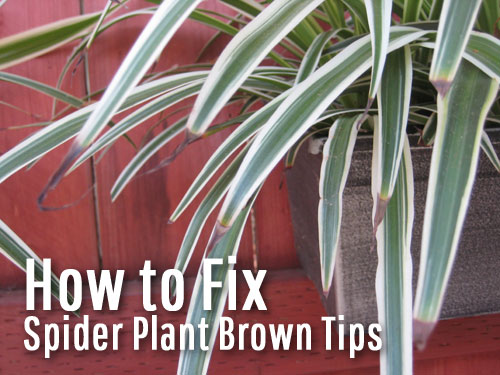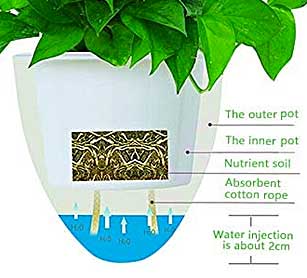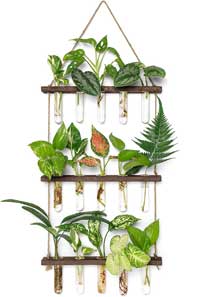With many plants, especially houseplants, brown leaf tips can usually mean lack of water. However, we hear more complaints about spider plants getting brown tips on their leaves. What exactly causes this?
Spider Plant Brown Tips: The Solution
The short answer comes down to several issues that could be causing the problem. For example fluoride, excess fertilizer, improper lighting, mineral build-up in the soil and, of course, dry soil.
The good news is that there are easy fixes that we can implement. We just need to do some detective work.
Note: I found the easiest way to prevent leaves from browning is to use self-watering planters and filtered water. These 2 simple tips help to (1) remove chlorine (2) minimize mineral build-up (3) provide adequate drainage and (4) prevent soil dry-out.
Plus, my spider plants require less care because I don’t have to water as frequently. It’s a win-win =).
And something to note: having brown leaf tips doesn’t harm the spider plant, it just doesn’t look great. If you just want to leave the brown tips alone, that’s fine too! =)
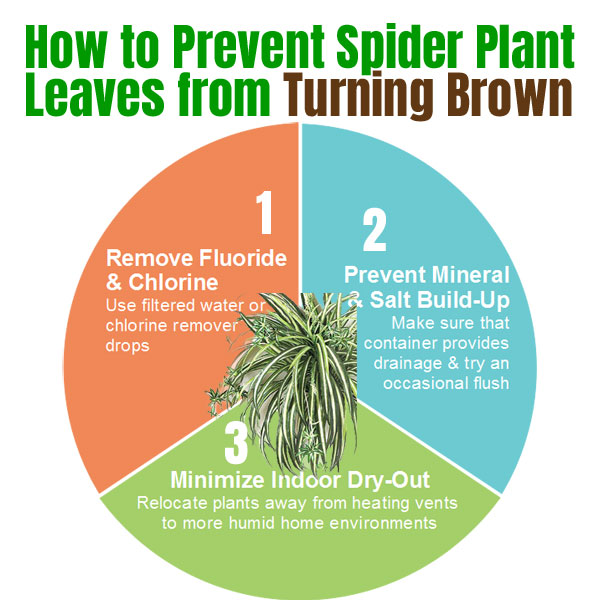
Here’s What the Spider Plant Experts Say:
1. Get Rid of Fluoride & Chlorine in the Water:
Ron Smith, Horticulturist at the NDSU Extension Service has a web page dedicated to answering questions about spider plants. He says that brown tips can be caused from fluoride or chlorine in the water.
To resolve this issue, some people alternate regular watering with using distilled water. Some gardeners have had success alleviating this brown leaf tips by adding a chlorine-remover to the water, such as Chlorine Remover Plus.
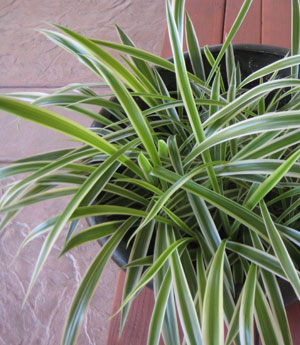
You can also use bottled water, filtered water or rainwater to avoid this problem altogether. Many home gardeners use rain barrels for this very reason.
According to The Schundler Company, you can easily avoid fluoride damage. The secret is to counteract the availability of the fluoride to the plant roots.
To do this, simply raise the soil pH by adding limestone or gypsum to it. The fluoride will now not damage the plant.
Another interesting element that they mention is that fluoride can also be found in peat moss and perlite. Therefore, even if you don’t have fluoridated water, your plants could still be impacted by fluoride in the soil.
2. Prevent Salt & Mineral Build-Up in the Soil:
Spider plants grow best in soil that can drain. As mentioned in the UBC Botanical Garden Forums, these plants are sensitive to salts in the soil which can build up over time if they are not allowed to drain out.
To rid excess salt from the soil, periodically water your potted plant to the point of overflow. If your plant is experiencing brown leaf tips and its pot has no drain holes, you may want to consider re-potting it.
Actually, salt build-up can be a result of fluoridated water, says GardeningKnowHow.com. Therefore, you may want to try an occasional “flush”, even if you are’t using fertilizer.
3. Minimize Indoor Spider Plant Dry-Out:
HGTV says that indoor plants have the tendency to dry out, especially during the wintertime. Make sure that spider plants aren’t located near heating vents (or other indoor greens for that matter). If you can, try to re-locate them to a more humid environment such as a kitchen near the sink or bathroom shower.
Dan Gill from the LSU Ag Center says that brown tips on leaves on indoor houseplants signify a problem, but it doesn’t tell us which problem. He explains that you may need to do some detective work before figuring out exactly where the issue lies.

